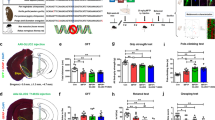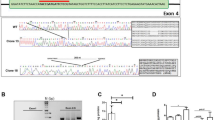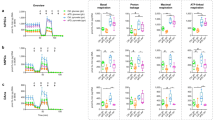Abstract
Glutaric Aciduria type I (GA1) is a rare neurometabolic disorder caused by mutations in the GDCH gene encoding for glutaryl-CoA dehydrogenase (GCDH) in the catabolic pathway of lysine, hydroxylysine and tryptophan. GCDH deficiency leads to increased concentrations of glutaric acid (GA) and 3-hydroxyglutaric acid (3-OHGA) in body fluids and tissues. These metabolites are the main triggers of brain damage. Mechanistic studies supporting neurotoxicity in mouse models have been conducted. However, the different vulnerability to some stressors between mouse and human brain cells reveals the need to have a reliable human neuronal model to study GA1 pathogenesis. In the present work we generated a GCDH knockout (KO) in the human neuroblastoma cell line SH-SY5Y by CRISPR/Cas9 technology. SH-SY5Y-GCDH KO cells accumulate GA, 3-OHGA, and glutarylcarnitine when exposed to lysine overload. GA or lysine treatment triggered neuronal damage in GCDH deficient cells. SH-SY5Y-GCDH KO cells also displayed features of GA1 pathogenesis such as increased oxidative stress vulnerability. Restoration of the GCDH activity by gene replacement rescued neuronal alterations. Thus, our findings provide a human neuronal cellular model of GA1 to study this disease and show the potential of gene therapy to rescue GCDH deficiency.
This is a preview of subscription content, access via your institution
Access options
Subscribe to this journal
Receive 12 print issues and online access
$259.00 per year
only $21.58 per issue
Buy this article
- Purchase on Springer Link
- Instant access to full article PDF
Prices may be subject to local taxes which are calculated during checkout




Similar content being viewed by others
Data availability
Data is available within the published article and supplementary files. Additional data are available from corresponding author on reasonable request.
References
Goodman SI, Markey SP, Moe PG, Miles BS, Teng CC. Glutaric aciduria; a “new” disorder of amino acid metabolism. Biochem Med. 1975;12:12–21.
Schuurmans IME, Dimitrov B, Schröter J, Ribes A, de la Fuente RP, Zamora B, et al. Exploring genotype–phenotype correlations in glutaric aciduria type 1. J Inherit Metab Dis. 2023;46:371–90.
Yuan Y, Dimitrov B, Boy N, Gleich F, Zielonka M, Kölker S. Phenotypic prediction in glutaric aciduria type 1 combining in silico and in vitro modeling with real-world data. J Inherit Metab Dis. 2023;46:391–405.
Kölker S, Sauer SW, Hoffmann GF, Müller I, Morath MA, Okun JG. Pathogenesis of CNS involvement in disorders of amino and organic acid metabolism. J Inherit Metab Dis. 2008;31:194–204.
Kölker S, Garbade SF, Greenberg CR, Leonard JV, Saudubray JM, Ribes A, et al. Natural history, outcome, and treatment efficacy in children and adults with glutaryl-CoA dehydrogenase deficiency. Pediatr Res. 2006;59:840–7.
Pérez-Dueñas B, De La Osa A, Capdevila A, Navarro-Sastre A, Leist A, Ribes A, et al. Brain injury in glutaric aciduria type I: the value of functional techniques in magnetic resonance imaging. Eur J Paediatr Neurol EJPN Off J Eur Paediatr Neurol Soc. 2009;13:534–40.
Couce ML, López-Suárez O, Bóveda MD, Castiñeiras DE, Cocho JA, García-Villoria J, et al. Glutaric aciduria type I: outcome of patients with early- versus late-diagnosis. Eur J Paediatr Neurol EJPN Off J Eur Paediatr Neurol Soc. 2013;17:383–9.
Boy N, Mühlhausen C, Maier EM, Heringer J, Assmann B, Burgard P, et al. Proposed recommendations for diagnosing and managing individuals with glutaric aciduria type I: second revision. J Inherit Metab Dis. 2017;40:75–101.
Boy N, Mühlhausen C, Maier EM, Ballhausen D, Baumgartner MR, Beblo S, et al. Recommendations for diagnosing and managing individuals with glutaric aciduria type 1: third revision. J Inherit Metab Dis. 2023;46:482–519.
Busquets C, Begon˜ B, Merinero B, Julia´ J, Vaquerizo J, Orozco M, et al. Glutaryl-CoA dehydrogenase deficiency in Spain: evidence of two groups of patients, genetically, and biochemically distinct. 2000;48:315–22.
Koeller DM, Woontner M, Crnic LS, Kleinschmidt-DeMasters B, Stephens J, Hunt EL, et al. Biochemical, pathologic and behavioral analysis of a mouse model of glutaric acidemia type I. Hum Mol Genet. 2002;11:347–57.
Zinnanti WJ, Lazovic J, Housman C, LaNoue K, O’Callaghan JP, Simpson I, et al. Mechanism of age-dependent susceptibility and novel treatment strategy in glutaric acidemia type I. J Clin Invest. 2007;117:3258–70.
Zinnanti WJ, Lazovic J, Wolpert EB, Antonetti DA, Smith MB, Connor JR, et al. A diet-induced mouse model for glutaric aciduria type I. Brain. 2006;129:899–910.
Sauer SW, Okun JG, Fricker G, Mahringer A, Müller I, Crnic LR, et al. Intracerebral accumulation of glutaric and 3-hydroxyglutaric acids secondary to limited flux across the blood-brain barrier constitute a biochemical risk factor for neurodegeneration in glutaryl-CoA dehydrogenase deficiency. J Neurochem. 2006;97:899–910.
Kölker S, Koeller DM, Okun JG, Hoffmann GF. Pathomechanisms of neurodegeneration in glutaryl-CoA dehydrogenase deficiency. Ann Neurol. 2004;55:7–12.
Rodrigues MDN, Seminotti B, Amaral AU, Leipnitz G, Goodman SI, Woontner M, et al. Experimental evidence that overexpression of NR2B glutamate receptor subunit is associated with brain vacuolation in adult glutaryl-CoA dehydrogenase deficient mice: a potential role for glutamatergic-induced excitotoxicity in GA I neuropathology. J Neurol Sci. 2015;359:133–40.
Rio P, Baños R, Lombardo A, Quintana-Bustamante O, Alvarez L, Garate Z, et al. Targeted gene therapy and cell reprogramming in Fanconi anemia. EMBO Mol Med. 2014;6:835–48.
Shipley MM, Mangold CA, Szpara ML. Differentiation of the SH-SY5Y human neuroblastoma cell line. J Vis Exp. 2016;108:53193.
Wittig I, Braun H-P, Schägger H. Blue native PAGE. Nat Protoc. 2006;1:418–28.
Janero DR. Malondialdehyde and thiobarbituric acid-reactivity as diagnostic indices of lipid peroxidation and peroxidative tissue injury. Free Radic Biol Med. 1990;9:515–40.
Baric I, Wagner L, Feyh P, Liesert M, Buckel W, Hoffmann GF. Sensitivity and specificity of free and total glutaric acid and 3-hydroxyglutaric acid measurements by stable-isotope dilution assays for the diagnosis of glutaric aciduria type I. J Inherit Metab Dis. 1999;22:867–81.
Cudré-Cung HP, Remacle N, do Vale-Pereira S, Gonzalez M, Henry H, Ivanisevic J, et al. Ammonium accumulation and chemokine decrease in culture media of Gcdh−/− 3D reaggregated brain cell cultures. Mol Genet Metab. 2019;126:416–28. https://doi.org/10.1016/j.ymgme.2019.01.009.
Gao J, Zhang C, Fu X, Yi Q, Tian F, Ning Q, et al. Effects of targeted suppression of Glutaryl-CoA dehydrogenase by lentivirus-mediated shRNA and excessive intake of lysine on apoptosis in rat striatal neurons. PLoS One. 2013;8:e63084.
Fu X, Gao H, Tian F, Gao J, Lou L, Liang Y, et al. Mechanistic effects of amino acids and glucose in a novel glutaric aciduria type 1 cell model. PLoS One. 2014;9:e110181.
Olivera-Bravo S, Ribeiro CAJ, Isasi E, Trías E, Leipnitz G, Díaz-Amarilla P, et al. Striatal neuronal death mediated by astrocytes from the Gcdh-/- mouse model of glutaric acidemia type I. Hum Mol Genet. 2015;24:4504–15.
Schauwecker PE, Steward O. Genetic determinants of susceptibility to excitotoxic cell death: implications for gene targeting approaches. Proc Natl Acad Sci USA. 1997;94:4103–8.
Martin LJ, Chang Q. DNA damage response and repair, DNA methylation, and cell death in human neurons and experimental animal neurons are different. J Neuropathol Exp Neurol. 2018;77:636–55.
Li J, Pan L, Pembroke WG, Rexach JE, Godoy MI, Condro MC, et al. Conservation and divergence of vulnerability and responses to stressors between human and mouse astrocytes. Nat Commun. 2021;12:3958.
Bakken TE, van Velthoven CT, Menon V, Hodge RD, Yao Z, Nguyen TN, et al. Single-cell and single-nucleus RNA-seq uncovers shared and distinct axes of variation in dorsal LGN neurons in mice, non-human primates, and humans. Elife. 2021;10:e64875.
Loor G, Kondapalli J, Schriewer JM, Chandel NS, Vanden Hoek TL, Schumacker PT. Menadione triggers cell death through ROS-dependent mechanisms involving PARP activation without requiring apoptosis. Free Radic Biol Med. 2010;49:1925–36.
Rodrigues MDN, Seminotti B, Zanatta Â, de Mello Gonçalves A, Bellaver B, Amaral AU, et al. Higher vulnerability of menadione-exposed cortical astrocytes of glutaryl-CoA dehydrogenase deficient mice to oxidative stress, mitochondrial dysfunction, and cell death: implications for the neurodegeneration in glutaric aciduria type I. Mol Neurobiol. 2017;54:4795–805.
Tripathi R, Gupta R, Sahu M, Srivastava D, Das A, Ambasta RK, et al. Free radical biology in neurological manifestations: mechanisms to therapeutics interventions. Environ Sci Pollut Res Int. 2022;29:62160–207.
Seminotti B, Amaral AU, da Rosa MS, Fernandes CG, Leipnitz G, Olivera-Bravo S, et al. Disruption of brain redox homeostasis in glutaryl-CoA dehydrogenase deficient mice treated with high dietary lysine supplementation. Mol Genet Metab. 2013;108:30–9.
Acknowledgements
We thank Paula del Río for providing us with the plasmid pCCL.PGK.FANCA.WPRE. We are indebted to the Flow Cytometry Platform of IDIBAPS for technical help.
Funding
AM-B is recipient of a PIF-Salut predoctoral contract from Generalitat de Catalunya, Spain. MG-M is recipient of a Sara Borrell contract CD21/00019 from Instituto de Salud Carlos III (ISCIII). This work was supported by grants to CF from the CIVP19A5949-Fundación Ramon Areces, Merck Sharp Dohme España S.A, ACCI-CIBERER (ER21P2AC737) and PID2020-119692RB-C22 Spanish Ministerio de Ciencia e Innovación, with partial support from the Generalitat de Catalunya SGR2021/01169 and SGR2021/01423. It also acknowledges the support of CHARLIE Consortium, a project supported by ISCIII under the frame of E-Rare-3, the ERA-Net for Research on Rare Diseases, EJPRD grant nr: 825575. CIBERER is an initiative of the ISCIII. We also acknowledge the support of CERCA Program/Generalitat de Catalunya. This work was developed at the Centro Esther Koplowitz, Barcelona, Spain.
Author information
Authors and Affiliations
Contributions
AM-B and ES-B performed the functional experiments and prepared the figures. JG-V developed the methods for metabolite analysis helped on the metabolite analysis, SG-S generated the constructs and contributed with some functional experiments. FT participated in the GCDH enzyme activity assays, GG and MG-M helped with the analysis of lipid peroxidation, AR provided GA1 pathology expertise and contributed to manuscript writing, JC, IR, and JR performed the FISH analysis, CF coordinated the study and wrote the manuscript.
Corresponding author
Ethics declarations
Competing interests
The authors declare no competing interests.
Ethical approval
The authors declare compliance with ethical standards.
Additional information
Publisher’s note Springer Nature remains neutral with regard to jurisdictional claims in published maps and institutional affiliations.
Supplementary information
Rights and permissions
Springer Nature or its licensor (e.g. a society or other partner) holds exclusive rights to this article under a publishing agreement with the author(s) or other rightsholder(s); author self-archiving of the accepted manuscript version of this article is solely governed by the terms of such publishing agreement and applicable law.
About this article
Cite this article
Mateu-Bosch, A., Segur-Bailach, E., García-Villoria, J. et al. Modeling Glutaric Aciduria Type I in human neuroblastoma cells recapitulates neuronal damage that can be rescued by gene replacement. Gene Ther 31, 12–18 (2024). https://doi.org/10.1038/s41434-023-00428-8
Received:
Revised:
Accepted:
Published:
Issue Date:
DOI: https://doi.org/10.1038/s41434-023-00428-8



